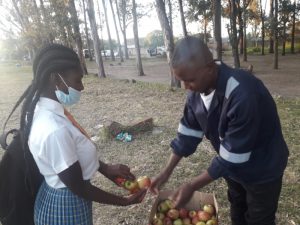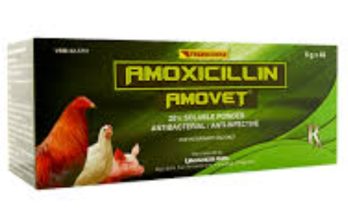
By Kudakwashe Pembere
SCHOOL pupils in urban high density primary and secondary schools usually knock off at around 5pm and walk in clusters.
Waiting for these learners who have had a mixed day at school are usually vendors selling all kinds of sweets and corn snacks. Hardly do you find any fruit being sold.
There are a few high density dwellers with the mind of having orchards. Of those who have them, the fruit trees are for decorative purposes, with mango and guava trees dominating. Some schools however,are beginning to have mulberries and bananas in their orchards.
If students are found taking these fruits it is considered theft, a punishable offence.
In Highfields, close to Best Choice High School, is a food vendor selling apples in a cardboard box. Beside him is a lady vendor selling the corn snacks and freezits.
A young school girl from Best Choice High buys apples from him.
“We hardly find fruits being sold from around this area such as apples. I would have bought bananas by the church back there but I couldn’t find them. I’m glad I found these apples. Its been a while since I ate apples. We usually find fruits expensive but they are not as we thought,” said a Form 2 pupil named Shannel.
A few moments later, my interview with the vendor is interrupted by a group of four boys from that same school. They buy three apples costing ZW$20 each (approx US$0.20)
“I no longer eat these corn snacks because I once had an acidity problem. I was advised by doctors not to take them. I know apples contain vitamins,” said Tinashe a form 3 pupil.
He says his doctor also advised him not to take apples.
In a high density suburb hardly do we hear of diet charts. A diet chart is basically a guideline of what you should/should not eat. His friend Nigel Musakwa reveals they have one that their home.
“At my house there is a diet chart telling us which foods to eat in the morning, afternoon and in the evening ,” he says.
Nigel also mentions that many Zimbabweans are eating too much sugars in the form of starch.
“At school we learnt that 60 percent of Zimbabweans eat starchy foods. So having a diet chart is important as it consists of various food items that contain all the nutrients. It informs what time to eat vitamin rich foods, carbohydrates or proteins,” says Nigel.
Nigel finds it beneficial to families not just in the Harare area, but to the whole country if the importance of having diet charts is publicised.
“Many families, actually all families should have diet charts. They should be advertised on television, radio as well as on billboards teaching them to follow a proper diet plan as stated on diet charts,” says the Form 3 pupil.
He finds the man selling apples doing them good but bemoans how other pupils ignore how beneficial these fruits are.
“Its laudable seeing this man selling apples close to our school. Unfortunately, not all pupils buy these apples. Most pupils are so used to buying these corn snacks. They eat apples only if someone brings them some or if they are sick. They cannot buy apples on their own. Its impossible,” says Nigel.
Asked why they buy these corn snacks, another pupil who refused to give his name, argues that it is more of a cost-benefit scenario.
“As you noticed, these apples are ZW$20 and with the same amount, one can buy a freezit and two packets of corn snacks,” said the pupil.
But where is the benefit of eating non-nutritious items which will see these adolescents leading unhealthy lives?
The apple vendor who only identifies himself as Richard says he finds his trade unique as many vendors who sell foodstuffs to pupils sell these scantily nutritious corn snacks and freezits.
“I noticed that school pupils fancy Mazeppe (colloquial name for corn snacks) and Freezits. Most of these students face health problems such as malnutrition, losing and gaining weight unhealthily. They won’t eat the food that would have been cooked at home because they would have eaten these corn snacks.
“I found that selling apples and oranges would provide them an opportunity to eat nutritiously. In fruits there are vitamins and other nutrients.
I’m seeing an interest in these fruits because they have been used to seeing biscuits, freezits and corn snacks. Now they are seeing these apples and buying which is also good for my business,” he says.
The Zimbabwe Civil Society Organisations Scaling Up Nutrition Alliance (ZCSOSUNA) alongside the Rural Enterprise Trust of Zimbabwe and other organisations having been spreading nutrition advocacy in schools around Zimbabwe.
The state of the world’s children’s report of 2019, according to ZCSOSUNA national coordinator Mr Kudakwashe Zombe ,highlighted that diets of adolescents in low and middle-income countries are generally nutritionally poor.
“Among school going adolescents, only 34 percent attested to consuming fruits and 21% vegetables less than once a day, but 42 percent drink carbonated soft drinks at least once a day.
“The report also noted that just under half of the adolescents, 46% consume fast food at least once a week and half of adolescent girls in low income and rural settings in low income and middle income countries eat fewer than 3 meals a day, with most missing or skipping breakfast,” he said.
He bewails how such practices are predisposing school going adolescents to the triple burden of malnutrition. “As a nation we cannot afford to delay in intervening.
Full implementation of the School Health Policy of 2018 and its related policies and strategies is critical in the preventing and reducing consumption of non-nutritious foods at schools and other environments among adolescents,” Mr Zombe said.
Ministry of Health and Child Care Nutrition Public Health Nutritionist, Ms Chj Chikanda is saddened by how guavas, mangoes and other fruits are ignored in schools and left to rot.
She said a study done by Muderedzwa and Matsungo in 2018 saw about 26 percent of adolescents having overweight issues.
“And also another study done in 2018 showed some adolescents in Kwekwe were overweight.
Most of them were spending a lot of money at the tuckshop buying jiggies, chocolates, chips and sweets despite even bringing a lunch-box at school,”said Ms Chikanda.
Concerns are that fruits are as expensive and luxurious as opposed to corn snacks which are affordable. It appears adolescent pupils need to be taught more on nutritious food choices to lead healthy lives.
While plans are afoot to strenghten the growing of fruit trees in schools, school leaders and teachers should promote the eating of these fruits and not leave them as a way of keeping up appearances.



